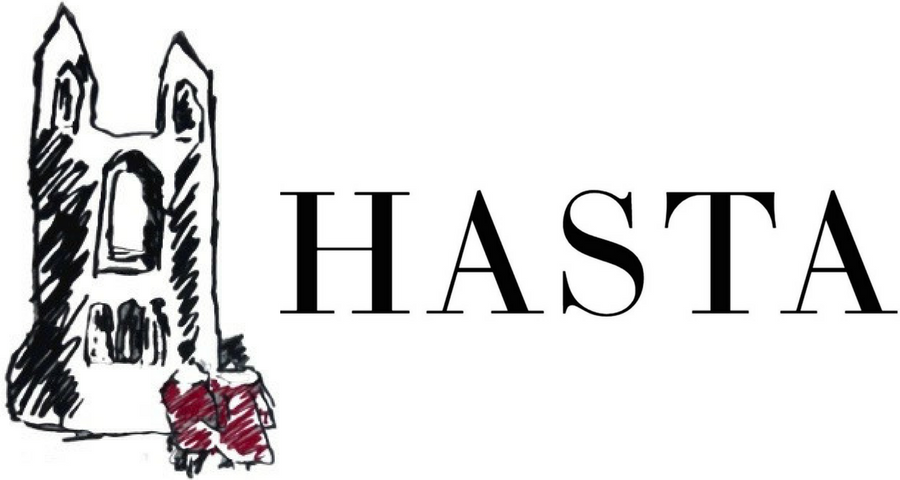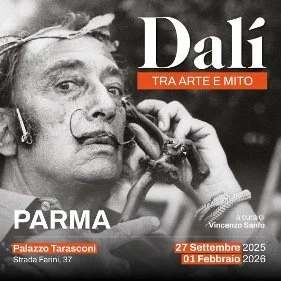Between Art, Myth … and Fraud? Dalí fakes seized from Italian Exhibition
By Mary Henderson
Italian authorities have confiscated twenty-one suspected forgeries attributed to the Surrealist artist Salvador Dalí from a show in Parma, Italy, titled ‘Dalí, Between Art and Myth’. Opening in the Palazzo Tarasconi on 27 September, after having been hosted in Rome for several months, the exhibition brought together over eighty drawings, engravings, and tapestries. These works were supposedly donated by private collectors in Italy and Belgium, with the show set to run until February 2026.
Carabinieri Officers holding one of the 21 artworks seized on October 1, 2025.
Image Courtesy of Reuters.
A court in Rome issued the decisive seizure after the Carabinieri Cultural Heritage Protection Unit (Carabinieri TPC), Italy’s art and antiquities crime squad, and experts in Spain agreed that the works shown might not be genuine. According to Art News, Dalí is one of the most forged artists in the world, alongside Picasso and Modigliani. It has been suggested that this is partially due to the misuse of many thousands of genuine signatures he gave out during the 1970s and 1980s for publishers to use in later limited-edition prints, as well as general weaknesses in the print market. This is the third major seizure the Carabinieri have conducted just with Dalí’s works, with the former seizures occurring in Switzerland, 2024, and Spain, 2023.
Questions about their authenticity had been circulating since a routine check in January, after the Carabinieri received a report from the Fundación Gala-Salvador Dalí about their suspicions regarding anomalies in some of the works. Founded in 1983, the Fundación Gala-Salvador Dalí is a nonprofit foundation that safeguards Dalí’s intellectual property.
The Foundation confirmed that they were not consulted for the show by its organisers. The commander of the Carabinieri TPC’s Rome branch, Diego Poglio, told The Guardian: ‘We found this absolutely strange, because if you want to organise an exhibition of an artist’s works, especially such an important one, you cannot not go through the Foundation which manages the collection.’
Exhibition Poster.
Image Courtesy of Palazzo Tarasconi.
‘Something seemed to be amiss. We noticed that only lithographs, posters, and drawings by Dalí were on display, along with a few statues and other objects, but no paintings or anything of importance. It was difficult to understand why someone would want to organise an exhibition of such low value works.’
The Fundación Gala-Salvador Dalí also issued a statement, saying ‘From the moment the contents of this exhibition became known, the Dalí Foundation expressed concerns to the Carabinieri regarding three drawings and a series of graphic works, a fact that was also reported to the SIAE (Italian Society of Authors and Publishers).’
Poglio asserted that ‘If the works are indeed proven to be inauthentic, those who set up the exhibition will have to justify why they exhibited inauthentic works and, of course, may be liable for certain crimes of art forgery.’ He continued to caution the exhibition organisers, saying that ‘we must always be careful – those in charge of the scientific curation must always conduct thorough checks on authenticity before displaying the works.’ The curator of the show, Vincenzo Sanfo, stands by the authenticity of the lithographs, maintaining that he has the documentation to prove it.
The Carabinieri seized 21 artworks that were suspected forgeries of Salvador Dalí’s work.
Image by Carabinieri del Nucleo TPC di Roma.
The Carabinieri have been especially busy combatting sales of reproduced works in recent months. In February 2025, a secret forgery workshop in Rome was uncovered, with the Carabinieri seizing seventy-one artworks falsely credited to artists including Picasso, Rembrandt, and Pissarro. Incriminating material included false provenance documents and falsified artist signatures for artworks that would go on to be sold on websites like eBay and Catawiki. Only three months before that, they dismantled a European-wide forgery network accused of producing and distributing hundreds of replica artworks by over thirty artists including Dalí, Banksy, and Andy Warhol.
Bibliography
Broucher, Brian. “Italian police Seize 21 Suspected Salvador Dalí Fakes During Museum Raid.” ArtNet,October 2, 2025. https://news.artnet.com/art-world/palazzo-tarasconi-raid-salvador-dali-fakes-2695503
Chang, Alisa, Daniel Ofman, Kai McNamee, and Justine Kenin, “Why does Salvador Dalí’s work lend itself to forgery?” NPR, October 2, 2025. https://www.npr.org/2025/10/02/nx-s1-5559635/why-does-salvador-dalis-work-lend-itself-to-forgery
Giuffrida, Angela. “Italy Art Police Seize 21 Suspected Fake Works from Salvador Dalí show.” The Guardian, October 1, 2025. https://www.theguardian.com/artanddesign/2025/oct/01/salvador-dali-carabinieri-italy-parma-authenticity-doubts
Lawson-Tancred, Jo. “Italian Police Shut Down Secret Workshop Producing Fake Picassos and Rembrandts.” ArtNet, February 20, 2025. https://news.artnet.com/art-world/fake-picassos-rembrandts-forgery-ring-2611069
The Independent. “Police raid Salvador Dali exhibition and seize 21 artworks in major forgery probe.” Independent, October 1, 2025. https://www.independent.co.uk/news/world/europe/salvador-dali-art-forgery-italy-b2837279.html
Whiddington, Richard. “Italian Police Bust Art Forgery Ring, Seizing More than $200 Million in Fake Works by Banksy, Picasso, and Others.” ArtNet, November 11, 2024. https://news.artnet.com/art-world/banksy-warhol-and-picasso-forgery-network-uncovered-in-italy-2568050



